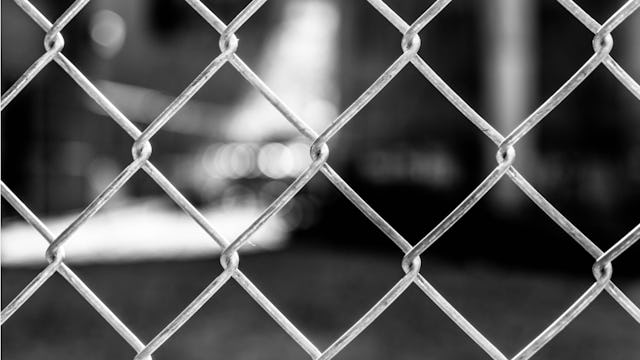Poor Parents Are Held To A Different Standard When It Comes To CPS

Poverty, not abuse, is the cause of many child removals
The child welfare system is a necessary and under-appreciated part of health and human services. Their job is to keep our children safe, and there’s no more important work than that. Unfortunately, Child Protective Services also act as an example of institutionalized classism and racism.
In an op-ed in today’s New York Times, Emma S. Ketteringham, the managing director of the family defense practice at the Bronx Defenders, puts the spotlight on an issue that is uncomfortable to acknowledge, but must be talked about.
In an article titled, “Live in a poor neighborhood? Better be a perfect parent,” Ketteringham writes about what she sees every day as a public defender, and what she feels is the real problem with child protective services: “There is a misconception that the child-protection system is broken because child services fails to protect children from dangerous homes…The problem is not that child services fails to remove enough children. It’s that the agency has not been equipped to address the daily manifestations of economic and racial inequality. Instead, it is designed to treat structural failings as the personal flaws of low-income parents.”
Ketteringham describes one of her clients, a woman she gives the name “Eline,” as an example. Eline is a single mom of two whose children were put in foster care for three years due to suspected neglect. Eline lived in a rat-infested apartment where it was impossible to keep the fresh foods her pediatrician ordered her to provide for her younger child, who was underweight. She finally got her kids back after going to a court-mandated parenting class and finding a different apartment. The injustice here, as Ketteringham puts it, is that “Eline did not need parenting classes; she already loved and cared for her children. She needed a home that wasn’t infested with rats. The city should have helped her find one.”
Instead, Eline lost her kids. For years.
Poorer parents are held to different standards than wealthier parents. Poor parents have their children taken away from them for sins that rich parents have the means to compensate for and hide. In a 2015 article in The Nation titled, “Has Child Protective Services Gone Too Far,” Ketteringham talked about this disparity, giving her wealthy Park Slope, Brooklyn neighborhood as a comparison: “In that community, differences in parenting style get the raise of an eyebrow or a disapproving look from a neighbor or a classmate’s parent—for some of the exact same things I see my clients being brought to Child Protective Services for.”
Indeed, one person’s “neglect” is another person’s “I just stepped away for a minute.”
According to a 2017 report from the American Society for the Positive Care of Children (SPCC), of all the cases of reported child abuse in 2015, 75.3% of those children were neglected, 17.2% were physically abused, 8.4% were sexually abused, and 6.9% were “psychologically mistreated.”
So what constitutes “neglect”? It varies state by state. For example, in 25 states, “failure to educate” is considered neglect. In eight states, “parental substance abuse” means the “use of a controlled substance by a caregiver that impairs the caregiver’s ability to adequately care for the child.” And in 17 states, “abandonment” is considered a type of neglect, and that can include everything from times “when the parent’s identity or whereabouts are unknown” to “the parent has failed to maintain contact with the child or to provide reasonable support for a specified period of time.”
Those are some fairly broad definitions, and more often than not, it’s poor parents and parents of color who pay for that ambiguity. Connecticut public defender Josh Mitchtom wrote a letter to The Atlantic in which he cited the following examples: “I’ve heard state lawyers argue that parents were neglectful simply for letting their children play on the sidewalk during the day in poor neighborhoods, or for leaving a baby unattended in a crib while taking out garbage three flights down—even though suburban parents who take garbage to the bins in their driveway are probably equally distant from a sleeping infant.”
And it’s not just anecdotal: The American Bar Association (ABA), in a paper examining the link between poverty and child-neglect, found that “…poverty itself is often mistaken for neglect, resulting in increased rates of child-maltreatment reports. The inability to feed, clothe, or house a child should not be mistaken for neglect.”
The underlying problem is not necessarily one of abuse or “bad parenting,” but rather the effect of living in conditions that make parenting almost unspeakably difficult. The ABA concluded that “addressing the underlying issue of poverty through acknowledgment, increased parent involvement, and increased financial support can help prevent child maltreatment, limit unnecessary child removal, and increase reunification and the protection of parental rights.”
It’s a tragedy that children are being taken away from their parents for problems that can’t be solved with parenting classes. We can’t just separate kids from their parents, tell those parents to fix issues that are impossible to fix, and tell ourselves we’re solving the problem. We need to do the more difficult work of addressing racism and class disparity while providing people with the support that they need in order to keep their families together.
What we have is not a crisis of caring, it’s a crisis of racism and a crisis of poverty.
This article was originally published on